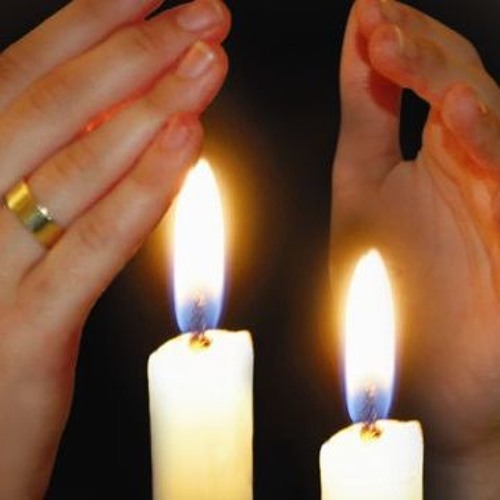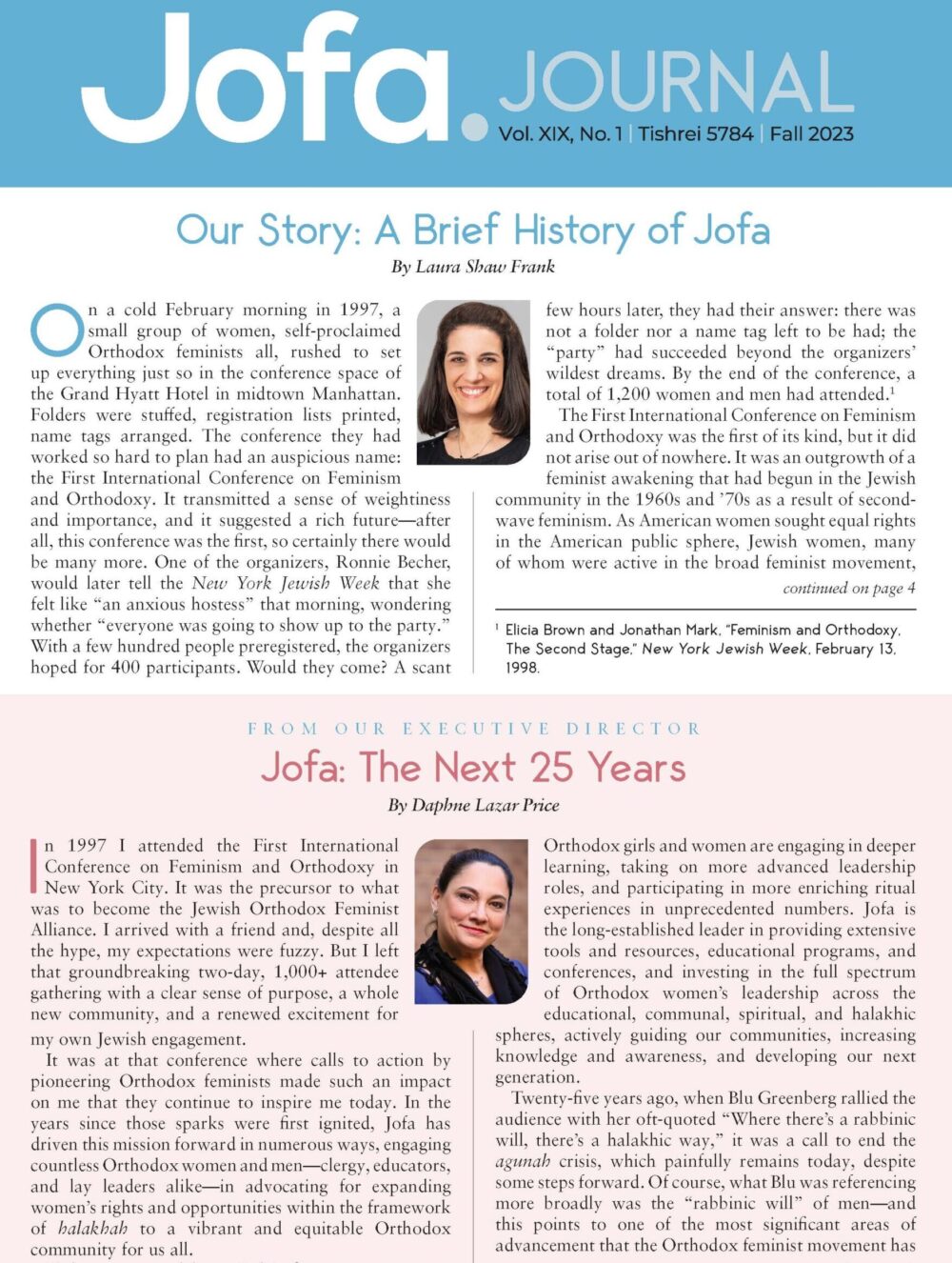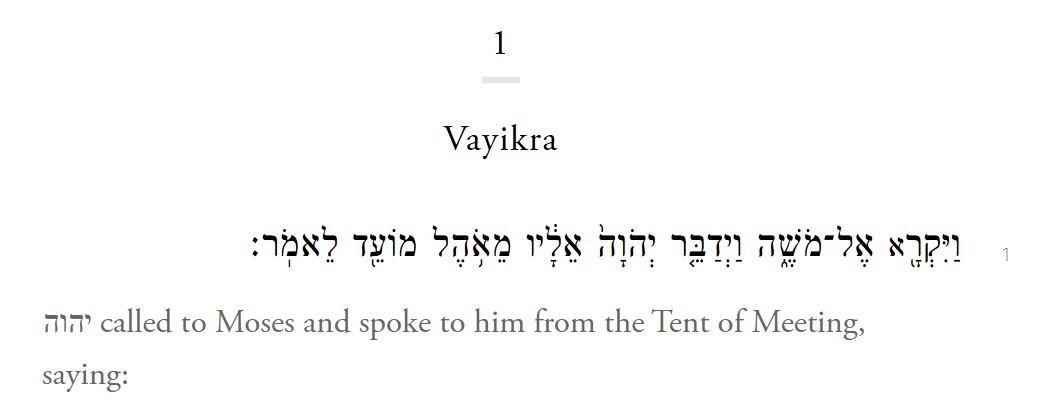By Rachel Kohl Finegold
“But where will you sit?”
That was the very first question I was asked by the very first reporter to interview me after I was hired to serve as a member of the clergy at Shaar Hashomayim, my Montreal synagogue. This first question was not about my job function, nor about my role in life-cycle events or in programming, but rather about my physical placement in the sanctuary. I have since received this question many times, especially by those who know of the large bimah in my historic congregation, on which the [male] clergy and officers sit, wearing morning coats and top hats. To my ears, this question holds within it a deeper one: If I don’t sit on the bimah, could I still be perceived as a full member of the clergy?
The mehitzah divides the room differently in every Orthodox shul. Some shuls seat the women in the back or on the balcony, whereas others have a mehitzah running down the middle of the sanctuary so the men’s and women’s sections are side by side. Each of these setups affects the way that women (and men) experience the davening. In synagogues served by a female member of clergy, the mehitzah informs how she operates in the shul. Over the years, I have taught and spoken in many kinds of synagogues, either as a member of the clergy or as a visiting scholar, and I have found the mehitzah to be both a challenge and an asset.
The Mehitzah as a Challenge
The mehitzah is a challenge because it hinders my access to those running the tefillah. I cannot tell you how many times I’ve stood waiting for the rabbi or the gabbai to notice that I am trying to get their attention. Many of us have had this experience, trying to catch the eye of a spouse or other family member across the mehitzah (if the height of your mehitzah allows for it) to get some essential message across. I experience this myself, trying to tell my husband that our toddler daughter is making her way over to sit with him, for example.
As the maharat, I have often tried to get a message to the gabbai—perhaps to call his attention to a new member who just entered the synagogue and would appreciate an aliyah. Or I might try to get the attention of the rabbi to let him know that I’ll give an introduction to shlishi (the third aliyah in the Torah reading), or to decide which of us will say the prayer for Israel that morning. There are countless details that even the most careful planning will not anticipate, and communication is necessary. I have often enlisted the help of other men who have noticed my efforts and can tap the rabbi on the shoulder to look my way.
Delivering a d’var Torah is also directly affected by the mehitzah layout. There have been times when I’ve stepped out from behind a small corner mehitzah to give the d’var Torah between mincha and ma’ariv, only to step back behind it when the tefillah begins. My leadership during the teaching serves to highlight my lack of leadership, and even lack of presence, during the tefillah itself.
If I am making the announcements, I wait until the last “amen” of Kaddish to step forward. If I am giving the sermon, I wait until the singing of “hadesh yameinu k’kedem” is complete, and then make my way onto the bimah amid the yasher koah’s of the men who have been opening and closing the ark. It is in these moments that I am acutely aware of my lack of access and my limited participation in ritual moments, as I wait until the proper moment to emerge from the women’s section.
Advantages of Being in the Ezrat Nashim
But there is also power in my location in the women’s section. I have stood with women saying Kaddish, offering help with the unfamiliar words or putting an arm around a shoulder. I have stood beside women saying birkat hagomel after giving birth, ensuring that the men provide the space for her to jump in and say the brakhah at the right moment. At times, I have given divrei Torah from the women’s section, giving a sense of leadership from that space. I am often the only woman’s voice to be heard in the course of an entire prayer service, and I know I am symbolically giving voice to half the room.
There is one congregant who comes over to greet me warmly as soon as she arrives in shul each Shabbat. She says she does this because she loves that she can walk right up and say hello to me when she comes into shul, something she cannot do with the rabbi. When it comes to the female officers of the board, these key lay leaders, much like me, do not occupy a seat on the bimah as do their male counterparts. But I have often had the opportunity to sit near them in the women’s section, allowing me some personal time with the president, vice president, or other officers of the board. When we pass the Torah through the women’s section, I walk behind it and greet the female congregants. It’s a personal touch that they otherwise cannot receive from the clergy, during this key moment in the davening.
Architecture Matters
Shul architecture matters. Mehitzah structure matters. When a synagogue hires a maharat, it will only highlight whatever access is or isn’t in place for women in shul.
The question of “Where will she sit?” is also a question of how will she exercise her leadership.
Not only does the nature of the mehitzah affect the presence of female clergy in the shul, but so does the seating of the leadership. Some shuls have a large central bimah where the leadership sits, others have no bimah at all, and still others have a front bimah that remains empty while the rabbi sits among the congregants. Indeed, in some shuls there is no one who will even think to ask, “But where will you sit?” That being said, whether or not the rabbi sits up on a bimah, he generally has a set place of honor, a makom kavua, which may be set apart by the presence of a special chair, or perhaps a shtender (book stand) at his place. This gives a seat of honor to the rabbi, or at the very least, ensures that no one would mistakenly take his seat.
It is often tricky to designate a seat for the female member of the clergy. Orthodox synagogues simply were not built with this arrangement in mind. Often the pew does not allow for it, or there just isn’t the space for an extra shtender or table. For this reason, informal shuls, which use folding chairs or movable furniture, are better equipped to adjust for a makom kavua for the female clergy. I know one maharat colleague whose congregation presented her with the gift of her own shtender to designate her makom, but in most synagogues this simply isn’t logistically possible.
This means that it is not unusual for me to leave my seat for a few moments, only to come back and find that someone has, unknowingly, taken my seat. I don’t personally need the kavod of a special seat, but it does make it hard to feel that I have a place in shul leadership, when I often don’t have a set place in shul at all.
Shul architecture can deeply inform the relationship between clergy and congregants. Despite constant new developments in shul life and leadership, synagogue architecture does not change quite so easily. When hiring a female member of clergy, a community might consider the implications of where she will sit, from where she will speak, and how she will operate within the physical synagogue space, all of which will affect how she is perceived and the power of her impact.
I would also love to see male members of the clergy think critically about where they choose to sit, and whether their shul’s layout maximizes their own potential as leaders. Some rabbis feel that being confined to the bimah hinders their access to congregants; others might understand a community’s need to see their rabbi in a place of importance. There is no one correct model when it comes to the seating of the clergy, whether male or female. But we should all be conscious of the importance of the answer to the question, “Where will you sit?”
Maharat Rachel Kohl Finegold is the Director of Education and Spiritual Enrichment at Congregation Shaar Hashomayim in Montreal. She previously served as the Education and Ritual Director at Anshe Sholom B’nai Israel Congregation in Chicago. She received her B.A. from Boston University, and is a graduate of the Drisha Scholars Circle. She was ordained as part of the inaugural class of Yeshivat Maharat.
[callouts, if necessary]
When a synagogue hires a maharat, it will only highlight whatever access is or isn’t in place for women in shul.
Shul architecture can deeply inform the relationship between clergy and congregants.
We should all be conscious of the importance of the answer to the question, “Where will you sit?”









